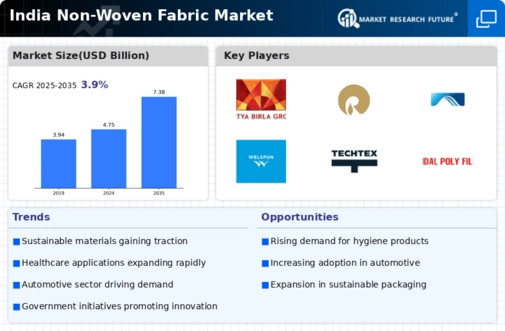The India Non-Woven Fabric Market has become increasingly competitive, driven by the growing demand for versatile and cost-effective materials across various industries such as hygiene, agriculture, and medical applications. This market is characterized by a diverse range of players, each contributing unique products and innovations that cater to different customer needs. The competitive landscape is influenced by factors such as technological advancements, product quality, pricing strategies, and the ability to adapt to market trends.
As the market matures, companies are focusing on sustainability, automation, and enhancing their production capabilities to maintain their competitive edge.Dupont holds a significant position in the India Non-Woven Fabric Market through its advanced manufacturing capabilities and innovative technologies. The company’s strengths lie in its commitment to quality and sustainability, enabling it to create high-performance fabrics suitable for various applications. Dupont's strong research and development initiatives allow it to consistently introduce new products that align with changing consumer preferences and regulatory requirements.
Additionally, the company has invested in establishing strategic partnerships and collaborations within the Indian market, which enhances its distribution network and market penetration. Dupont’s ability to leverage its global expertise while localizing its offerings gives it a competitive advantage in addressing the specific needs of the Indian consumer.Aditya Birla Group is another key player in the India Non-Woven Fabric Market, characterized by its extensive portfolio that includes products tailored for hygiene, medical, and industrial applications. The company has established itself as a pioneer in this sector, gaining a reputation for quality and innovation.
With a strong manufacturing base in India, Aditya Birla Group is well-positioned in terms of production capabilities and market presence. Its strengths include a robust supply chain, diversified product offerings, and a focus on sustainability practices. The company has actively pursued mergers and acquisitions to expand its footprint and enhance its product portfolio, further solidifying its position in the market. Through continuous investment in technology and strategic initiatives, Aditya Birla Group aims to meet the diverse demands of the Indian market while remaining a leader in the non-woven fabric segment.




















